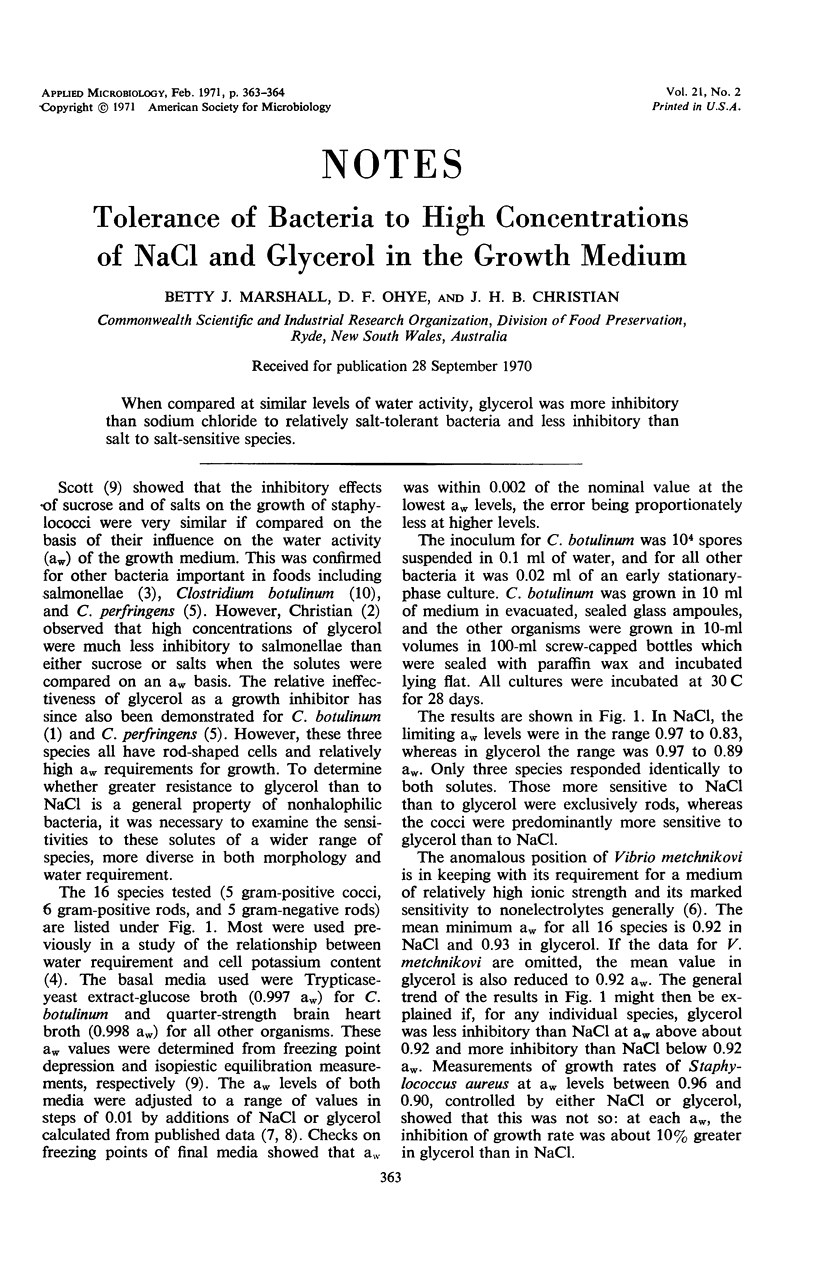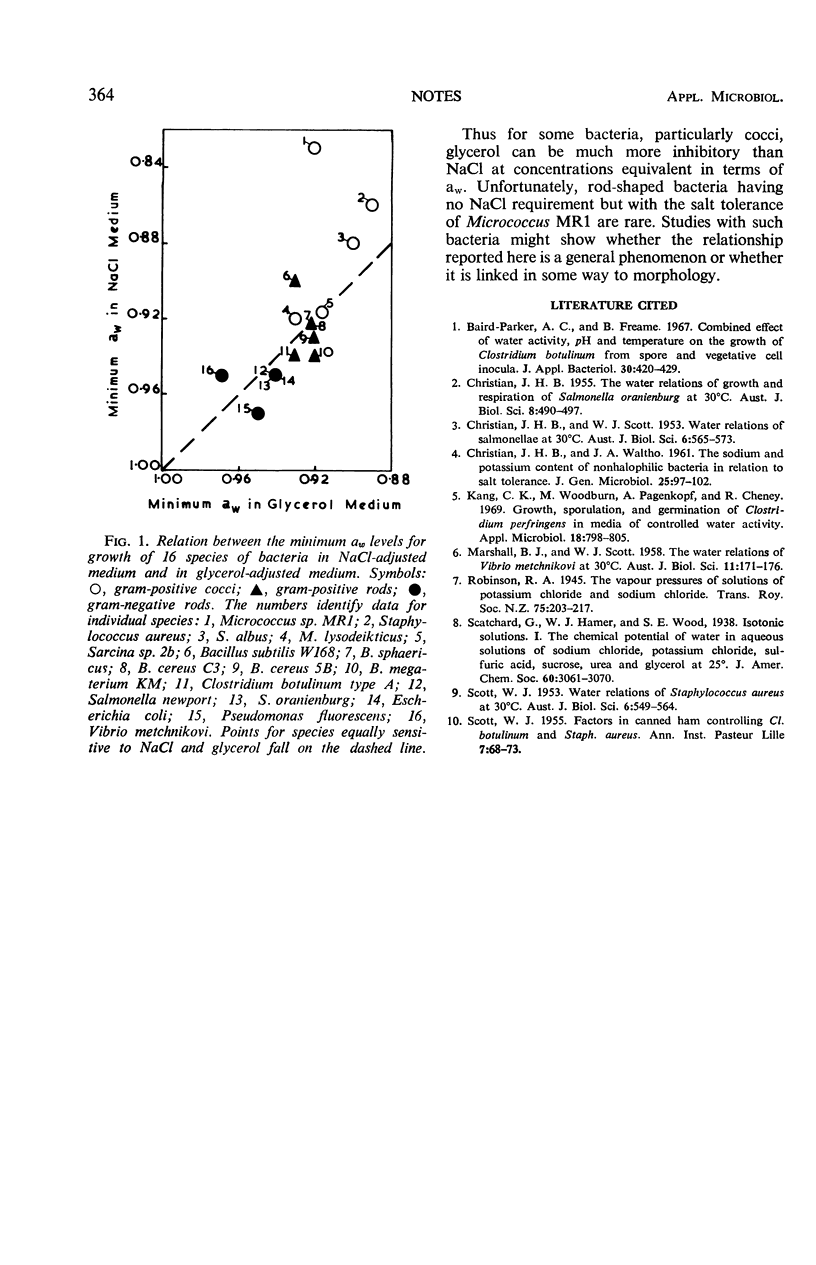Abstract
When compared at similar levels of water activity, glycerol was more inhibitory than sodium chloride to relatively salt-tolerant bacteria and less inhibitory than salt to salt-sensitive species.
Full text
PDF

Selected References
These references are in PubMed. This may not be the complete list of references from this article.
- Baird-Parker A. C., Freame B. Combined effect of water activity, pH and temperature on the growth of Clostridium botulinum from spore and vegetative cell inocula. J Appl Bacteriol. 1967 Dec;30(3):420–429. doi: 10.1111/j.1365-2672.1967.tb00320.x. [DOI] [PubMed] [Google Scholar]
- CHRISTIAN J. H., SCOTT W. J. Water relations of Salmonellae at 30 degrees C. Aust J Biol Sci. 1953 Nov;6(4):565–573. [PubMed] [Google Scholar]
- CHRISTIAN J. H., WALTHO J. A. The sodium and potassium content of non-halophilic bacteria in relation to salt tolerance. J Gen Microbiol. 1961 May;25:97–102. doi: 10.1099/00221287-25-1-97. [DOI] [PubMed] [Google Scholar]
- Kang C. K., Woodburn M., Pagenkopf A., Cheney R. Growth, sporulation, and germination of Clostridium perfringens in media of controlled water activity. Appl Microbiol. 1969 Nov;18(5):798–805. doi: 10.1128/am.18.5.798-805.1969. [DOI] [PMC free article] [PubMed] [Google Scholar]
- SCOTT W. J. Factors in canned ham controlling Cl. botulinum and Staph. aureus. Ann Inst Pasteur Lille. 1955;7:68–74. [PubMed] [Google Scholar]
- SCOTT W. J. Water relations of Staphylococcus aureus at 30 degrees C. Aust J Biol Sci. 1953 Nov;6(4):549–564. [PubMed] [Google Scholar]


